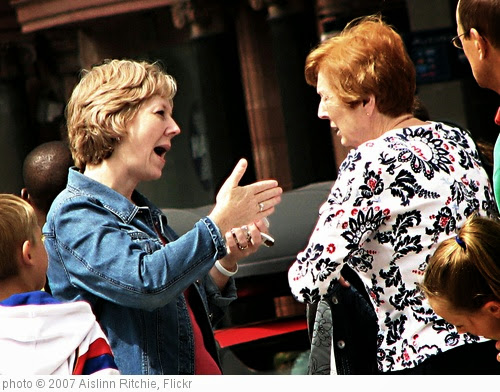I’m a big fan of encouraging students to accompany learning with gestures and physical movement, particularly, though not exclusively, with English Language Learners.
I thought I’d begin a short “The Best…” list on the topic, and ask readers to contribute additions.
Here are my choices for The Best Resources On Students Using Gestures & Physical Movement To Help With Learning:
Total Physical Response (TPR) is a mainstay of many ESL/EFL instructors. Teacher Joe has a nice short description of it, and here’s a much more TPR guide from the English Language and Literacy Center.
Here’s a study on how gestures improve memory.
What’s a quick and easy way to improve learning? is about a similar study.
Brief training with co-speech gesture lends a hand to word learning in a foreign language is yet another study.
I’ve previously written a post titled Using Gestures In Teaching & Learning.
The Secret Code Of Learning: Our body language can reveal more about what we know than our verbal language is by Annie Murphy Paul at TIME and provides a good overview of research on the topic.
Learning a language may come down to gestures is a Washington Post report on a new study. Thanks to The Center for Applied Second Language Studies for the tip.
Study: Gestures help language learning is another report on the same study.
High Fluid Intelligence, Gestures, and Simulation is from the Eide Neurolearning blog. It reports on recent research on gestures and learning.
To Learn A New Language, You’ve Got to Move More Than Your Mouth! is from Education Week.
A study found that “requiring children to gesture while learning the new concept helped them retain the knowledge they had gained during instruction.”
Teachers’ gestures boost math learning is from Eureka Alert.
Surprising Study — NOT: People Learn A Second Language Better By Physically Simulating Words
Video Of The Day: Physical Movement Helps Language Learning
Why Kids Shouldn’t Sit Still in Class is from The New York Times. It’s a good reminder to incorporate movement in class, even if you don’t use the videos they talk about in the piece.
How Seeing and Using Gestures Make Ideas More Memorable is from Mindshift.
Telling stories using rhythmic gesture helps children improve their oral skills is from Science Daily.
Children improve their narrative performance with the help of rhythmic gestures is a new study.
Excellent Research Summary On Using Gestures When Teaching
How Movement and Gestures Can Improve Student Learning is from Mindshift.
Why students learn better when they move their bodies – instead of sitting still at their desks is from The Conversation.
Learning by doing: How the brain’s motor system can support vocabulary learning is from Science Daily.
How Certain Gestures Help You Learn New Words is from Scientific American.
Whole-body learning can boost children’s letter sound recognition — the first step toward reading is from Science Daily.
How Gestures Can Help Students Learn is from Minding The Gap.
Meta-analysis shows sizable, resilient enactment effect: better memory for a word when S enacts the action the word described compared to reading, watching someone enact, imaging enactment. https://t.co/ulgt2Lr6E2 pic.twitter.com/uOxuJ7rSqx
— Daniel Willingham (@DTWillingham) December 24, 2022
This is obviously not a complete list, and I hope readers can suggest more resources.
If you found this post useful, you might want to consider subscribing to this blog for free.
You might also want to explore the nearly 700 other “The Best…” lists I’ve compiled.




HI Larry,
I have been using a program called AIM (Accelerative Integrated Method) for teaching French for 10 years now. We use gestures to teach vocabulary and it’s extremely effective. The methodology is extremely popular in Canada, where it was developed. Check it out! http://www.aimlanguagelearning.com
Syl